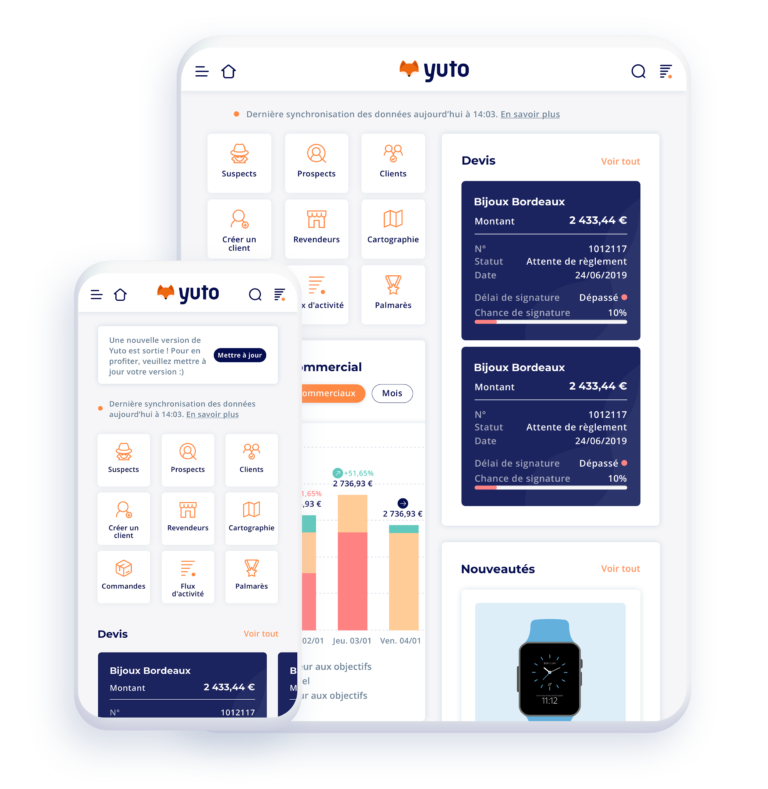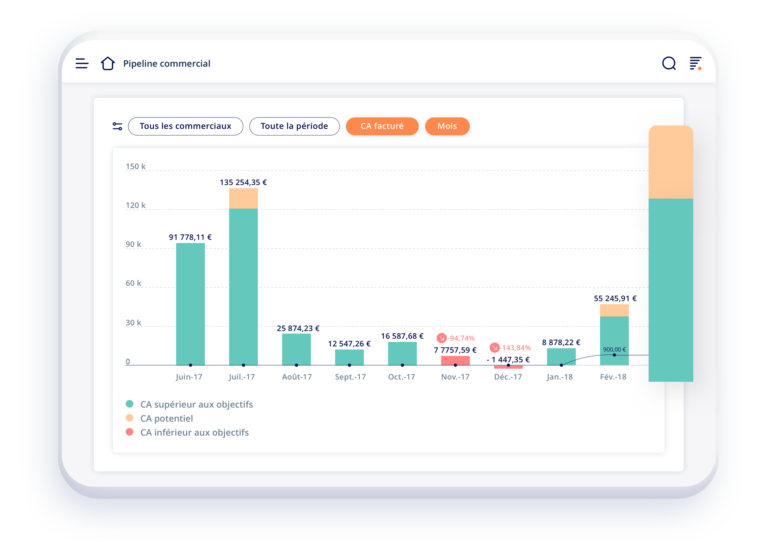In the realm of commercial prospecting, establishing an effective sales pipeline is a crucial step to ensure the growth and success of your business. A well-designed pipeline enables you to efficiently track and manage the journey of prospects, convert them into customers, and maximize sales opportunities. In this article, we provide some tips for creating a high-performing sales pipeline, with a focus on mobility through mobile CRM.
What is a commercial pipeline?
Before delving into the details of its creation, it’s essential to understand what a sales pipeline is. Simply put, a sales pipeline is a visual representation of your company’s sales process, from the initial contact with a prospect to closing the sale. It is typically divided into different stages corresponding to various phases of the sales cycle.
The importance of an effective sales pipeline
A well-structured sales pipeline offers numerous benefits for your business, including:
- Visibility and Tracking: A pipeline allows you to clearly visualize where your prospects are in the sales process, facilitating tracking and managing interactions with them.
- Sales Forecasting: By analyzing data from your pipeline, you can more accurately forecast future sales, enabling you to make informed decisions regarding sales strategy and resources.
- Optimization of Sales Process: By identifying bottlenecks and inefficiencies in your sales process, you can make continuous improvements to optimize your sales team’s performance.
Now, let’s explore how to create an effective sales pipeline, with an emphasis on mobility through a mobile CRM.
Steps to create a commercial pipeline
Define pipeline stages:
Before starting to use your Mobile CRM, it’s essential to clearly define the stages of your sales pipeline. These stages may vary based on your industry, target market, and business model, but typically include prospecting, lead qualification, proposal, negotiation, and closing the sale. By identifying these stages, you can better track your prospects’ journey through the pipeline.
Use a mobile CRM:
To create an effective sales pipeline, it’s essential to have a robust Customer Relationship Management (CRM) system tailored to your needs. Mobile CRM is a valuable tool for managing the sales pipeline. It allows sales representatives to access all the information they need in real-time, wherever they are. This enables them to track the progress of their opportunities, qualify leads, and make quick decisions.

Qualify prospects:
A crucial step in creating an effective sales pipeline is rigorously qualifying your leads. By identifying the most promising prospects early on with clear criteria, you can focus your efforts on the opportunities most likely to convert into sales. Use specific criteria to assess the level of interest, budget, and purchasing timeline of each prospect to determine if they fit your ideal customer profile.
Track and prioritize opportunities:
Once you have identified your qualified leads, it’s essential to effectively track their progress through your sales pipeline. Use Key Performance Indicators (KPIs) to monitor the conversion rate at each stage of the process and identify potential bottlenecks. By prioritizing your opportunities based on their level of qualification and potential value, you can focus your efforts where they will have the most impact.
Analyze and optimize your commercial process:
Regularly monitor the performance of your pipeline, analyze data, and adjust it based on results to continuously improve the effectiveness of your sales process.
With the built-in analytics features in a Mobile CRM, you can track the performance of your sales pipeline in real-time. You can identify which stages take the longest, friction points in the sales process, and opportunities for improvement. By using this data, you can adjust your prospecting and sales strategy to optimize your results.

Examples of sales pipelines
When it comes to successful sales pipelines, different companies have implemented tailored approaches to meet their unique needs. Here are some examples of how different industries have structured their pipelines for success:
SaaS company commercial pipeline:
- Stage 1: Product Demonstration – SaaS companies often include a product demonstration stage where prospects receive a detailed overview of the software’s features.
- Stage 2: Free Trial/Proof of Concept – After the demonstration, prospects may enter a trial phase to test the software’s capabilities.
- Stage 3: Negotiation – This stage involves discussions on pricing and negotiating subscriptions.
- Stage 4: Contract Signing – Once negotiations are finalized, contract signing marks the official conversion of the prospect into a paying customer.
B2B sales pipeline:
- Stage 1: Lead Qualification – B2B sales professionals often focus on lead qualification, where they analyze the fit of prospects with their products or services.
- Stage 2: Needs Analysis – This stage involves understanding specific needs and pain points of potential business clients.
- Stage 3: Proposal Submission – After understanding the needs, a detailed proposal is submitted to the prospect.
- Stage 4: Contract Negotiation – Negotiations regarding terms, pricing, and contract details take place at this stage.
Each of these examples highlights how companies tailor their sales pipelines to match their specific customer acquisition processes and industry requirements, demonstrating the versatility and customization potential of successful sales pipelines.
In summary, creating an effective sales pipeline is essential for driving the growth of your business. By following the steps mentioned above and integrating mobility through a mobile CRM, you can optimize your sales prospecting efforts and increase your chances of success. Remember, the key lies in defining a clear process, rigorously qualifying prospects, and regularly analyzing performance for continuous improvement. With a well-designed sales pipeline, you are on the path to success in your business endeavors.
If you want to implement tools that will help you improve your sales prospecting strategy, contact us:

